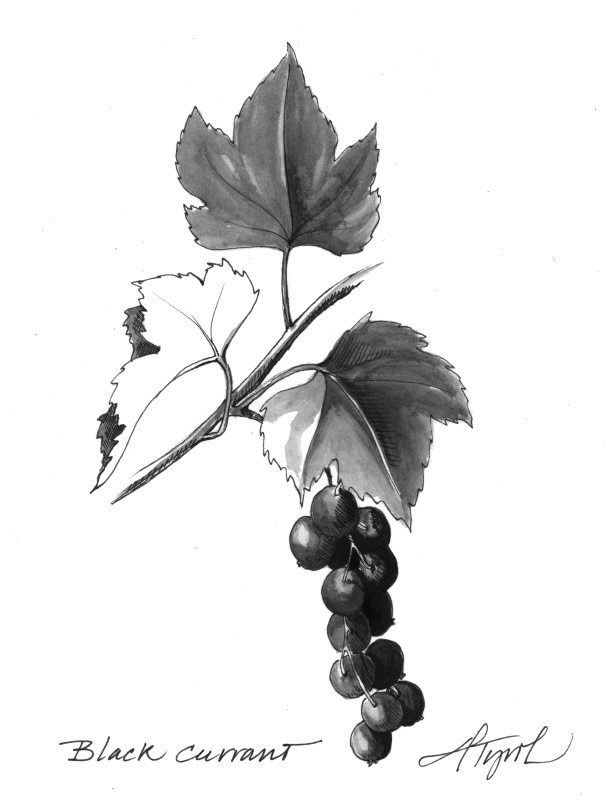
Chances are you have seen a victim of white pine blister rust. I think it’s safe to say that most big dead white pines – the ones with the remains of large crowns, not those that were slowly squeezed out by their neighbors – have this fungus to blame for their demise.
The transportation of tree diseases across the globe is not a new phenomenon. This fungus, one of the first introduced tree diseases (and for white pines, easily the worst), began its journey from its native Russia to North America in 1705. The first move was when our much-admired white pines were shipped from New England to the estate of Lord Weymouth in England. There they were renamed Weymouth pines and, by the mid-1800s, had been widely planted in Europe as well as in England. When a Russian pine infected with blister rust was shipped west, the disease hopped over to European Weymouth pines. The final helping hand was held out to the disease in the late-1800s, when American nurseries ran short of home-grown white pine seedlings to use in reforestation efforts and imported infected Weymouth pine seedlings to several different states.
Blister rust spreads quickly, and by the early 1900s, white pines throughout Vermont and New Hampshire were infected and dying. This fungus is true to its name: it attacks white pine, causes blisters, and has rust-colored spores in one of the stages of its complicated existence.
Five different types of spores are produced during the life cycle of this fungus, and three of them can only survive and reproduce on currants and gooseberries, which make up the genus Ribes. The disease does not spread from one pine to another: it must complete part of its life cycle on a Ribes plant. Spores produced on the leaves of Ribes then travel back to pines and infect the trees by entering the tiny holes in the needles called stomata.
In an attempt to control the disease, , the cultivation of Ribes was banned soon after blister rust was introduced, and crews were sent into the woods to tear up wild Ribes plants or treat them with herbicides in an attempt to eliminate this link in the chain of infection. If there are no currants or gooseberries close to white pines, there will be no new cases of white pine blister rust. On paper, it looked like a winning strategy.
It is estimated that over $150 million has been spent on destroying Ribes to save pines, plus an unknown amount on programs to breed resistance into both white pine and Ribes. In 1949, more than $6.5 million was appropriated for Ribes eradication. Fifty years ago, 95 percent of the $3.8 million spent on controlling forest diseases was aimed at blister rust.
Eliminating wild Ribes in areas where blister rust is most damaging – mainly cold, damp environments – is not effective. If even a few Ribes plants survive, the infection rate remains high. Eliminating Ribes from non-hazard areas, on the other hand, is unnecessary, because there the disease occurs infrequently regardless of the number of Ribes bushes.
Except in Maine and in the vicinity of tree nurseries, eradication programs have been abandoned as being futile. There are many native Ribes species, and their seeds may lie dormant for years before sprouting. To compound the problem, plants can grow back from small pieces of their roots. The federal ban on planting Ribes ended in 1966, and many states have cancelled eradication programs. In most states in the Northeast, all laws on the subject have either been rescinded or are not enforced anymore.
However noble the cause, there is bound to be opposition to an expensive program that doesn’t always work, especially one that forbids a delicious and nutritious crop from being planted. The pendulum now is swinging to the side that likes currant juice and jelly. Plus, it seems that currant juice is good for you, as well as tasty.
Several Ribes varieties have been bred that are resistant to blister rust. The black currants Consort, Coronet, and Crusader do not become infected, and farmers and gardeners throughout the Northeast have expressed an interest in growing them. Some foresters are a little worried about this, pointing out that these resistant cultivars are also non-native species and will inevitably interbreed with native species. The progeny from these crosses will be disseminated across the landscape, and subsequent generations may have little resemblance to their parents with respect to their invasiveness or their resistance to blister rust.
Finding a balance between the goals of forestry and those of farming – with currants being restricted to certain areas, perhaps – will require cooperation and communication. If that happens, we can have both black currant jelly and a nice set of pine shelves on which to store the jars.

